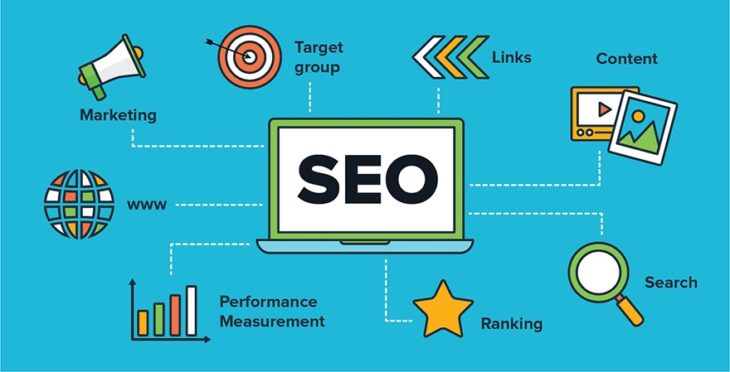Search Engine Optimization is this wonderful thing that allows you to deliver traffic, leads, and sales, to your online website. It is the thing that allows your website to gain traffic by optimizing the content that your readers consume. Through SEO, you are being able to rank on Google for a specific keyword, and that allows you to gain traffic the good way.
When it comes to SEO, there is a lot of information to process. It is not a simple thing, but in this article, we are going to try and give you a concise guide on the topic of Search Engine Optimization.
What is SEO?

Source: Fiverr
SEO stands for Search Engine Optimization and it is the practice of increasing the search engine ranking of your website in order to appear higher on SERP’s. SERPs stands for Search Engine Results Pages and those are the results that Google show you whenever you type something into it. There are two types of SEO, on-page and of-page SEO.
On-page SEO is the practice of optimizing the content of your website, while off-site SEO is the practice of building website links and backlinks.
How Does SEO Work?

Source: Oberlo
This can be a little bit complicated to answer, but we will try and answer it as simply as possibly we can.
SEO works through a process that has three parts.
- Google uses automated software that can often time be called search bots or spiders, that visit web pages in a process that’s called crawling.
- Once they’ve crawled to a certain web page, they add it to Google’s index which is a huge catalog of web pages on the internet.
- These bots index your page for relevant keywords (we’ll get to that later) and they show the most relevant results for the keywords from that catalog every time a person searches for something.
The ratings of your web pages are determined by the quality and quantity of your content, website reputation, site information (very important), and how trustworthy your content is, according to Ninja SEO
What are the Factors Mostly Responsible for Ranking?

Source: VPDM Digital Marketing
While there are many factors, that Google doesn’t tell us, that Google uses for determining the ranking of your website, there are three that it seems are definitive.
Those are: Links, Content, and User Experience, most commonly referred to in the industry as RankBrain.
• Links
The internet is built on links, so that makes them very important. There are three types of links that most matter to search engines, and those are:
Inbound links: Links that come to your site from external web pages.
Outbound links: Links that come from your web pages to external sites.
And Internal links: Links that come from within your site linking to your own content.
• Content
Content is the second factor, but it is just as important as links in determining the rankings of your web pages. Content is what the user consumes, reads, views, etc, whenever he is on your website. Your content must be relevant to what people search, and it must be quality.
Another important factor is the length of your content. According to research, the top results for a specific keyword are websites that consist of content that’s more than 2000 words long. The longer your content, the more chances you get inbound links from other web pages.
• User Experience
The third and final most important factor is the user experience. Google calls this RankBrain and it consists of three major aspects.
- Clickthrough rate: How many people have visited your web site from SERP’s
- Bounce rate: How many people have bounced once they’ve found your website through SERP’s; the shorter time they’ve spent on your website is generally bad for your website.
- Dwell time: The most important of the three, the longer they stick to your website the better for your website.
Understanding Keywords

Source: Search Engine Land
Keywords are words or phrases that you use to describe what your content is and they are used by people to search for something. A very important part of SEO is keyword research, which is a term used for finding the best words or phrases to describe your content and optimizing that same for SEO.
Types of Keywords

Source: Search Engine Land
There are three types of keywords, and they can be categorized into head, body, and long tail keywords.
- Head keywords are one to two words that have a high search volume
- Body keywords are two to three-word phrases that have a medium search volume
- Long tail keywords are generally phrases of four or more worlds that have the lowest search volume. However, most website traffic comes from long tail keywords.
We will give you an example of these.
Head keyword can be a word like “shoes”. They have high cost and competition but have a low probability of conversation.
Body keyword can be something like “men’s shoes”. They come at a low cost and risk, with a somewhat average probability of conversion.
And long tail keywords can be something like “Men’s running shoes Nike Air Zoom”. These keywords are the lowest cost and risk but have the highest probability of conversion.